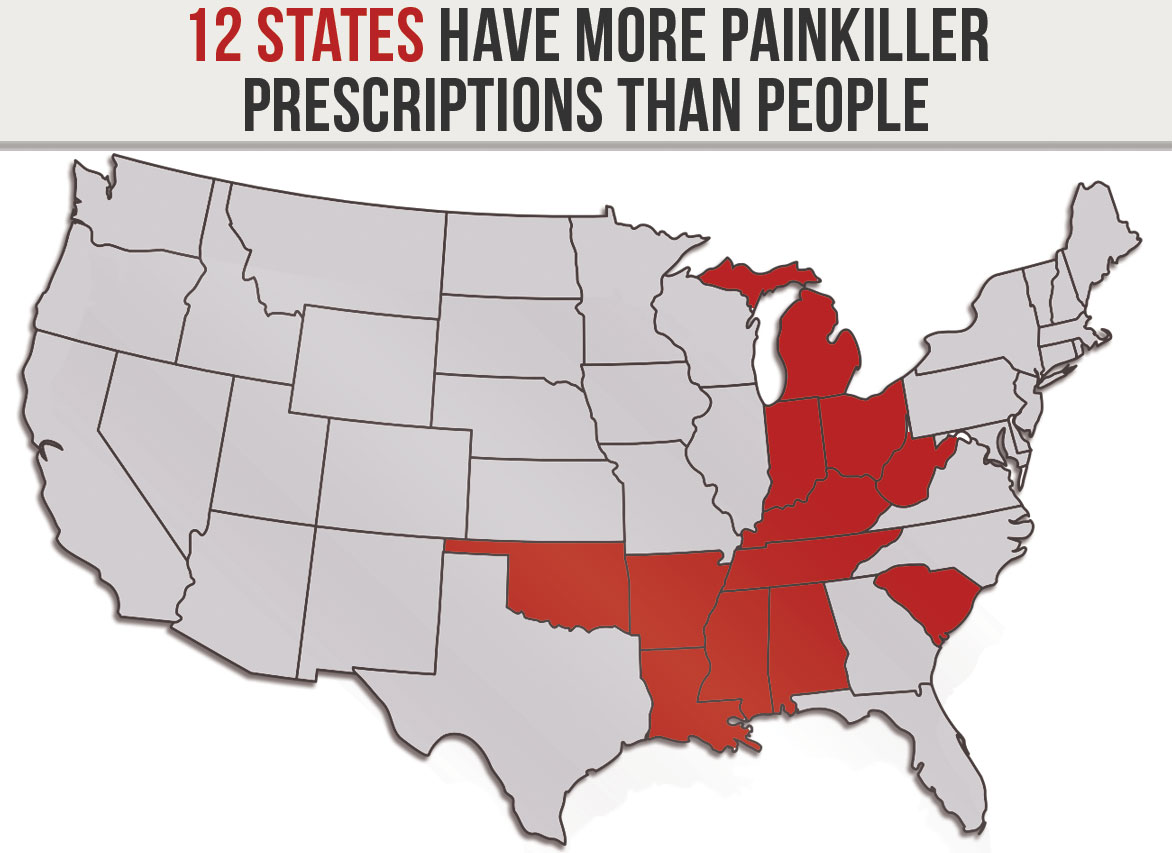Combatting Heroin and Prescription Drug Abuse
-
Prescription opioid overdose deaths in the U.S. have quadrupled since 1999, with 44 people dying every day.
-
Prescription opioid abuse is associated with a sharp rise in heroin use and overdoses.
-
The Senate is working on bipartisan legislation across committees to protect against opioid and heroin abuse.
The Rise in Prescription Opioid Abuse
In 2014, 61 percent of all drug overdose deaths in the U.S. were related to opioids, primarily prescription pain relievers and heroin. Prescription opioid overdose deaths have quadrupled since 1999, with 44 deaths every day. The Centers for Disease Control and Prevention has found that people in rural counties are almost twice as likely to overdose on prescription painkillers as those in large cities.

The ready availability of prescription painkillers is believed to be one of the leading factors in the rise of opioid abuse. When used appropriately, prescription opioids are among the most effective drugs for managing chronic pain – such as from cancer – and severe, acute pain after surgery or an accident. However, these drugs damage families and communities when misused.
From 1999 to 2013, the sale of prescription painkillers in the United States quadrupled. In 2012, doctors prescribed enough prescription opioids for every adult in the United States to have their own month’s supply. A recent study in the journal JAMA Internal Medicine found that opioid prescribing in the Medicare program is distributed across a number of different types of prescribers and specialties, not driven by small groups of prolific prescribers.

Unsurprisingly, some of this medication is diverted to nonmedical uses. According to the CDC, every day nearly 7,000 people are treated in emergency departments for using opioids in a manner other than as directed. Nearly 2 million Americans reported opioid abuse or dependency in 2013.
Prescription Opioids Associated with Increase in Heroin Abuse
Prescription opioid abuse is also associated with a rise in heroin use and overdoses. From 2002 to 2013, heroin use in the U.S. nearly doubled, and heroin-related overdose deaths nearly quadrupled. According to the CDC, “past misuse of prescription opioids is the strongest risk factor for heroin initiation and use.” A 2013 study from the Substance Abuse and Mental Health Services Administration showed that four out of five new heroin users had abused prescription pain medication before using heroin. Other consequences of the opioid epidemic include the spread of hepatitis C and HIV.
The Senate Is Responding
In response to these statistics, the Judiciary Committee has been working on the Comprehensive Addiction and Recovery Act of 2015, S. 524 (original Republican sponsors: Ayotte, Portman, Kirk), which aims to improve our country’s response to addiction. The bill creates an interagency task force to develop best practices for painkiller prescribing and authorizes grant programs to counter and treat opioid addiction. The Health Education Labor and Pensions Committee is working on a bipartisan mental health bill that will also include ideas on addressing the opioid and substance abuse crisis.
“These tragic statistics are more than just numbers. They are family members, friends, and neighbors. I’ve had too many families come to me and tell me that they’ve lost a daughter, or a son, or mother.” – Senator Kelly Ayotte, 01/27/2016
The Finance Committee also plans to hold a hearing to explore the opioid problem. It will highlight the Stopping Medication Abuse and Protecting Seniors Act, S. 1913 (original Republican sponsors: Toomey, Portman), a bill that establishes a program in Medicare to protects against the misuse of opioids and other controlled substances while ensuring beneficiaries can access needed drugs.
Late last year, Congress passed the Protecting Our Infants Act of 2015. This law will help to improve the prevention and treatment of opioid abuse by pregnant women and care for newborns affected by opioid abuse. Congress also included in the omnibus package $123 million – an increase of $91 million – for programs at the CDC and SAMHSA to combat opioid abuse. Additionally, it included $1.86 billion for SAMHSA for the Substance Abuse Prevention and Treatment Block Grant Program. This is a formula block grant for states that can be used for any substance abuse prevention and treatment activities, including for opioids.
Next Article Previous Article
